Elusive worm-lizards sport weird, spooky skulls
Scientists have now described this bizarre part of these reptiles' anatomy, bone-by-bone
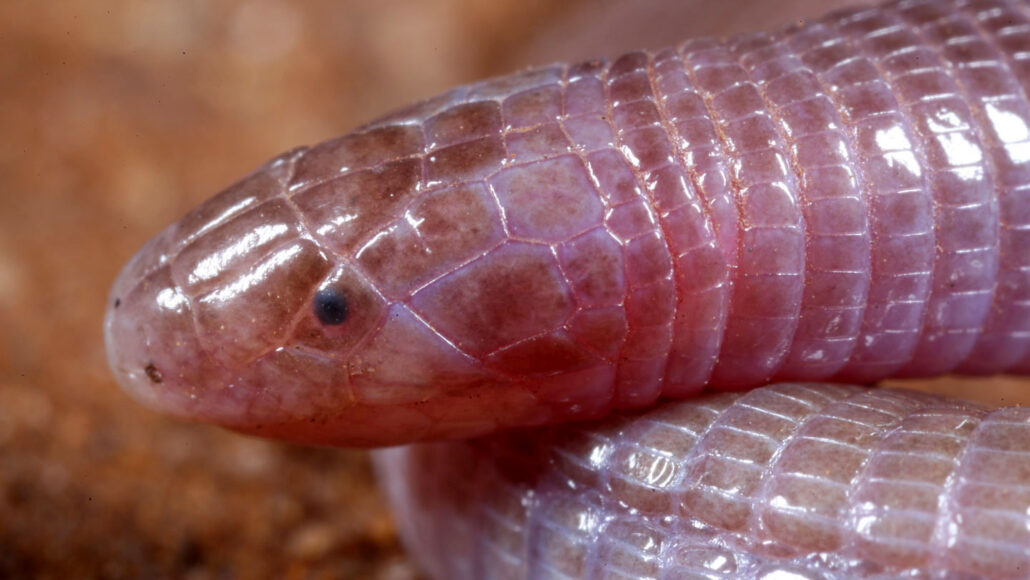
Legless lizards known as amphisbaenians move by wriggling through soil or sand. Researchers have recently described the skull bones of several species including Zygaspis quadrifrons (shown).
Johan Marais
Worm-lizards have pink or brown scaly skin, black beady eyes and sometimes a coy smile. But behind that grin are sharp teeth, a powerful jaw and one big middle tooth. New research unveils the skull bones of these tiny beasts and how their noggins may help them burrow through the ground.
Despite their ambiguous common name and wriggly nature, these lizards are not worms. And “worm-lizard” sounds less like a spelling bee word than “amphisbaenian” (Am-fis-BEE-nee-un). That’s the formal name for these generally limbless reptiles.
These unusual animals, which could fit in a person’s hand, live throughout much of the tropical world. Their habitat stretches across the Mediterranean, Middle East and Africa. It also includes South America, the Caribbean and up into Florida. But they’re hard to spot because they spend most of their time underground.
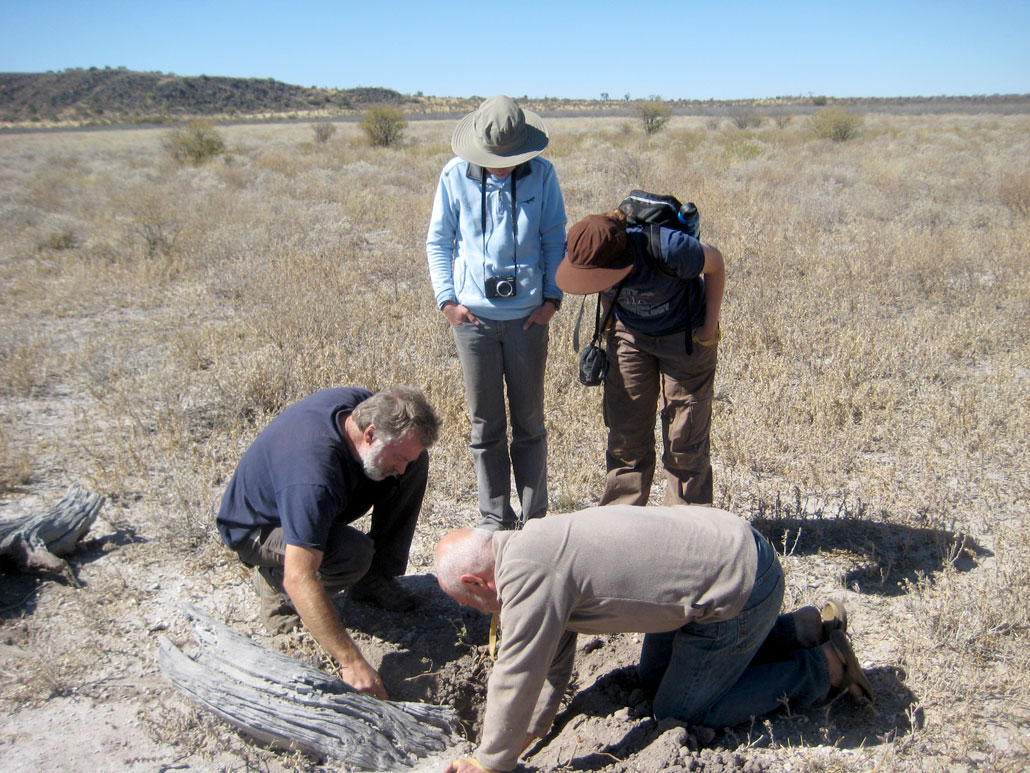
That cryptic — hard to see — lifestyle has meant researchers know little about these lizards. For worm-lizards of Zygaspis, the most common genus, scientists had only studied the animals’ outer appearance. But in two new papers, researchers describe and compare worm-lizard skulls, bone-by-bone.
Scientists have largely classified worm-lizards by head shape: round, shovel-like, keel-shaped and spade-like. Those shapes likely influence how each type moves through the ground.
Juan Daza, a coauthor on one of the new papers, studies reptiles at Sam Houston State University in Huntsville, Texas. He suspects that the round-headed lizards slowly jackhammer their way through the soil. A shovel-headed species, on the other hand, might use its noggin to scoop soil out of the way as it burrows. The new research looks to the worm-lizards’ heads for clues about how different species function.
Do you have a science question? We can help!
Submit your question here, and we might answer it an upcoming issue of Science News Explores
Beginning in Botswana
In 2009, Patrick Lewis traveled to Botswana, a land-locked nation in southern Africa. A paleontologist, Lewis works at Sam Houston State University. He normally studies fossils. But in Botswana, he was part of a team studying the environment. The project included trapping local reptiles.
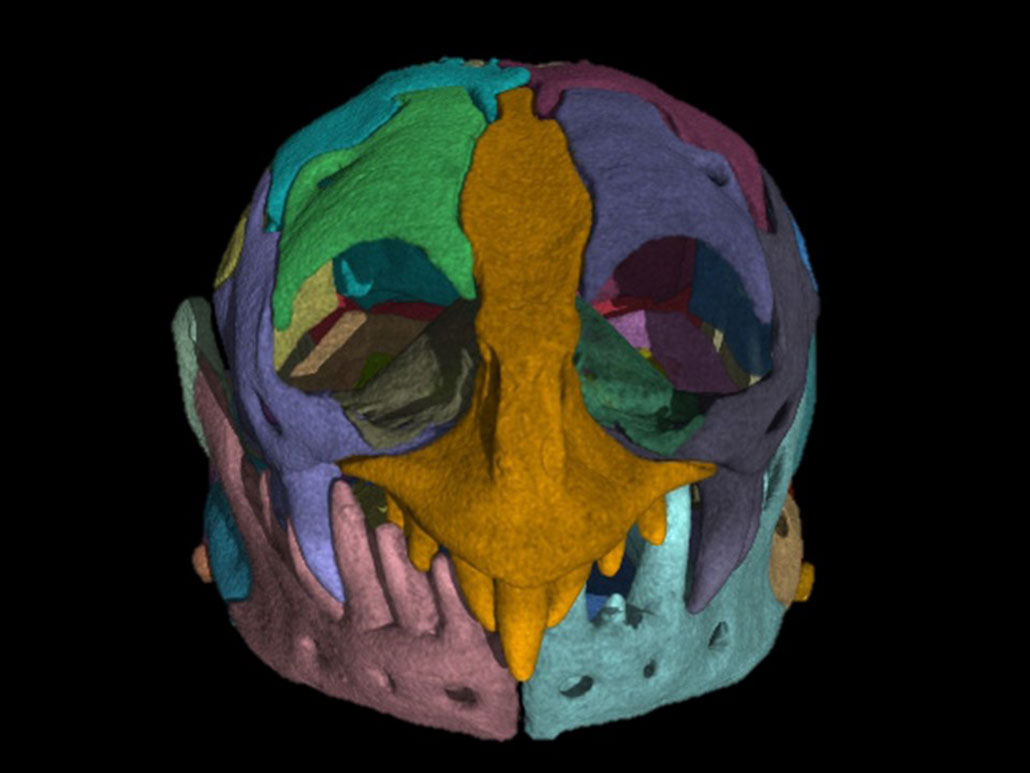
One student handed Lewis what looked like a worm. Oddly, it moved more like a snake. The strong creature even tried to bite him, Lewis recalls. Lewis teamed up with Christopher Bell at the University of Texas at Austin. He’s one of the world’s few amphisbaenian experts.
The researchers brought specimens of round-headed worm-lizards back to the United States. All belonged to the genus Zygaspis. Technicians at the University of Texas at Austin imaged the animals’ skulls with CT scans.
Each scan looks like a series of slices of the animals’ interior. Together, the slices create a 3-D model that can be used to study bones or other internal tissues.
College students went through each CT slice and colored each bone a different hue. This took years. Lewis turned these images over to Antonio Meza, who was part of this work while at Sam Houston State University. A morphologist, he studies animals’ structure and how it relates to their function. Meza reviewed thousands of color-coded images of skulls from the 15 Zygaspis worm-lizards. He compared their anatomy and found ways that certain species differed from others.
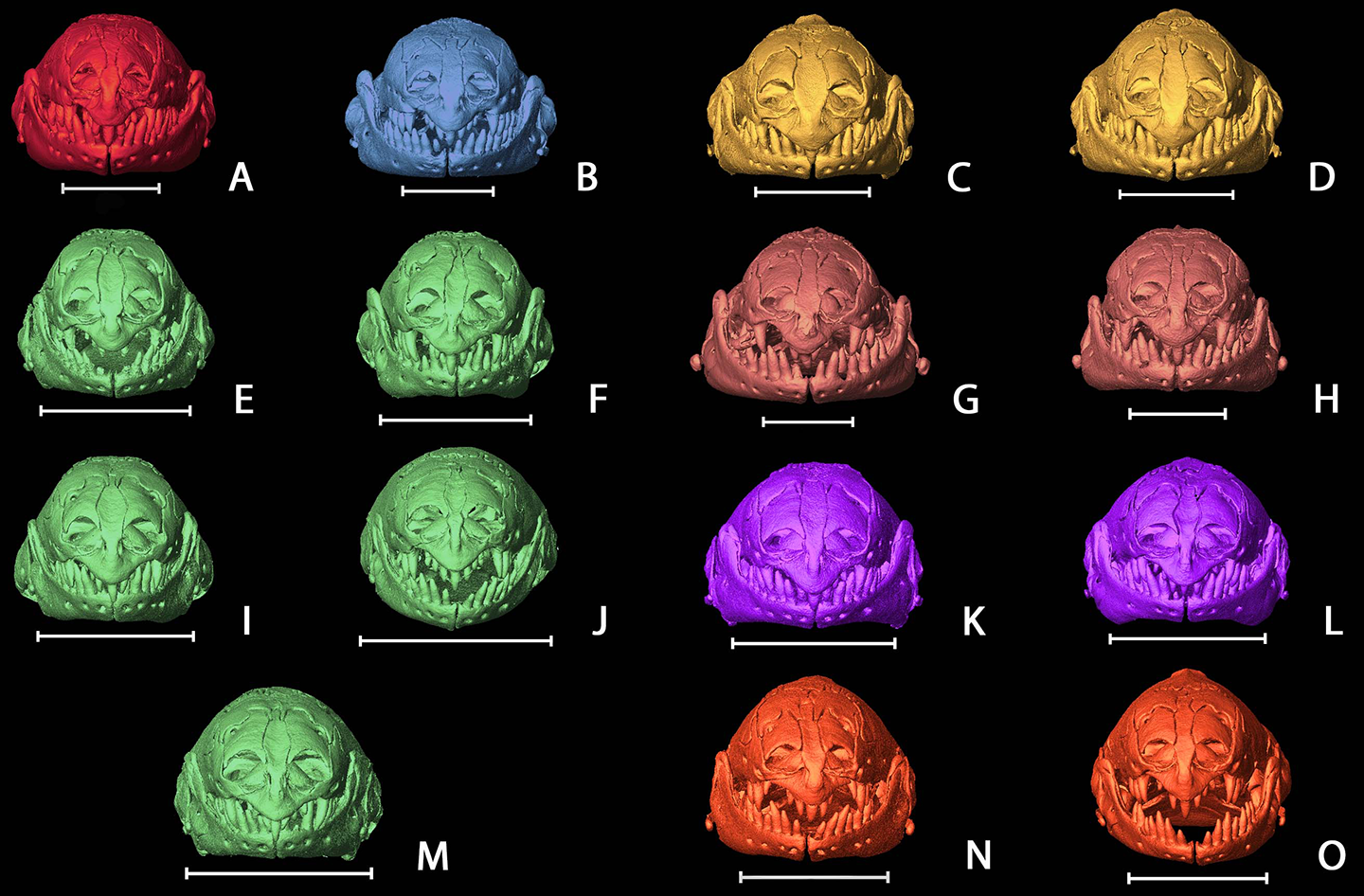
One big, middle tooth
The first thing you might notice are the skulls’ most peculiar feature — a large, middle tooth. It’s a sharp canine, which fits into the bone that makes up the animal’s snout.
Meza found that this bone was more slender in one species than in the others. A trait seen in only one species is called an apomorphy (AAH-puh-mor-FEE). Apomorphies help scientists distinguish one animal species from another. In total, Meza turned up five such apomorphies among the species he studied.
In general, the skull bones of these animals “are really, really weird,” notes anatomist Adam Hartstone-Rose. He works at North Carolina State University in Raleigh and was not involved in the new study. In addition to the big central canine, the CT scans revealed a bone that is barely visible, he notes. It sits at the bottom of the skull. Researchers have no idea why the bone is there, Hartstone-Rose says.
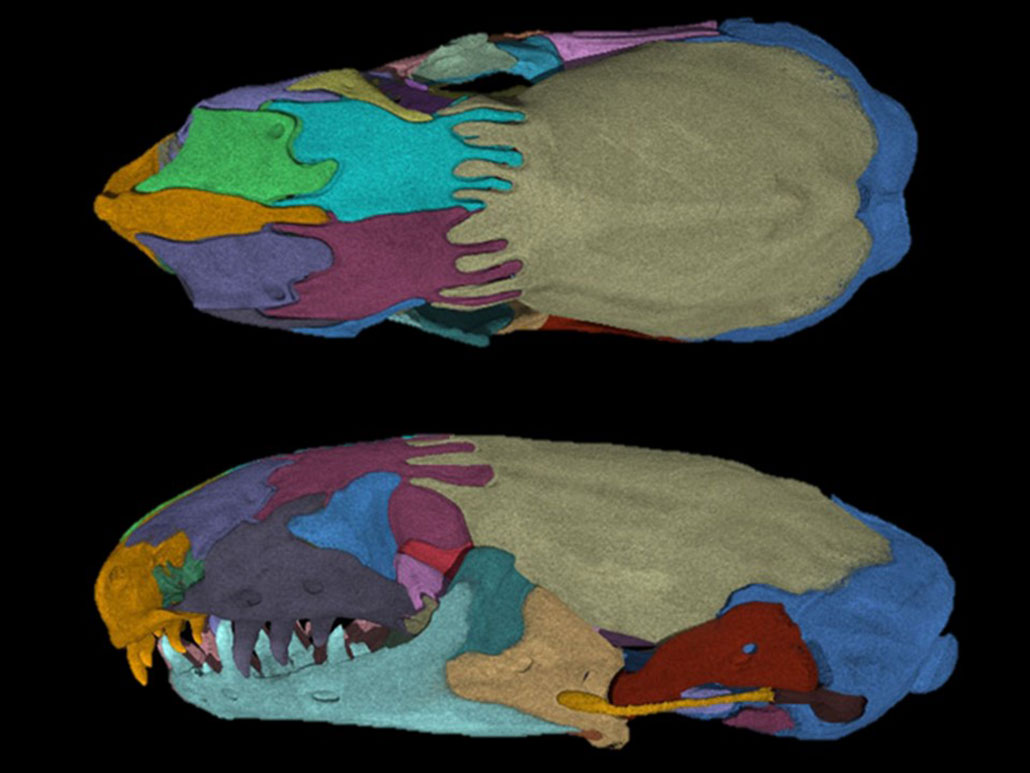
Also strange is how sutures in these skulls — natural seams between some bones — have “zig-zaggy connections,” Hartstone-Rose says. Many are interlocked, like hands whose fingers are intertwined. The sutures’ patterns may relate to how the animals move their heads. Worm-lizards dig in a variety of ways, he says. Some move their heads up and down and others side to side.
To need such unusual sutures, these animals “must be doing something powerful with their skull,” Lewis says. He thinks the sutures help keep the worm-lizards’ skulls from breaking when they burrow through tough soil.
The team’s new findings appear in the March issue of The Anatomical Record.

Educators and Parents, Sign Up for The Cheat Sheet
Weekly updates to help you use Science News Explores in the learning environment
Thank you for signing up!
There was a problem signing you up.
More worm-lizard mysteries
So far, Meza has investigated seven of the eight Zygaspis species. Many anatomical studies only examine one specimen from one genus, says Meza, who is now at Arizona State University in Tempe. From one sample, studies may attempt to draw conclusions about a whole class of animals. But even among different species from the same genus, Meza has found many unique features. This work shows the need to study multiple specimens in the same genus, he says.
Rather than studying more bones, Lewis first wants to learn more about the animals’ muscles, nerves and brain — their soft tissues — in their heads. Then, he’d like to study how soft tissues and the bones work together.
Hartstone-Rose, in contrast, is more interested in how these animals’ bones develop. He’s particularly curious about the premaxilla, the bone that holds the large central tooth. In most animals, there is a left and a right one, he notes. But in amphisbaenians, there is just one middle bone. Studying the skulls of baby amphisbaenians could reveal differences that set these creatures apart from others.
These two new papers “do a beautiful job of describing magnificent biology,” Hartstone-Rose says. But they’re only the beginning, he adds. For worm-lizards, there are still more questions than answers.







